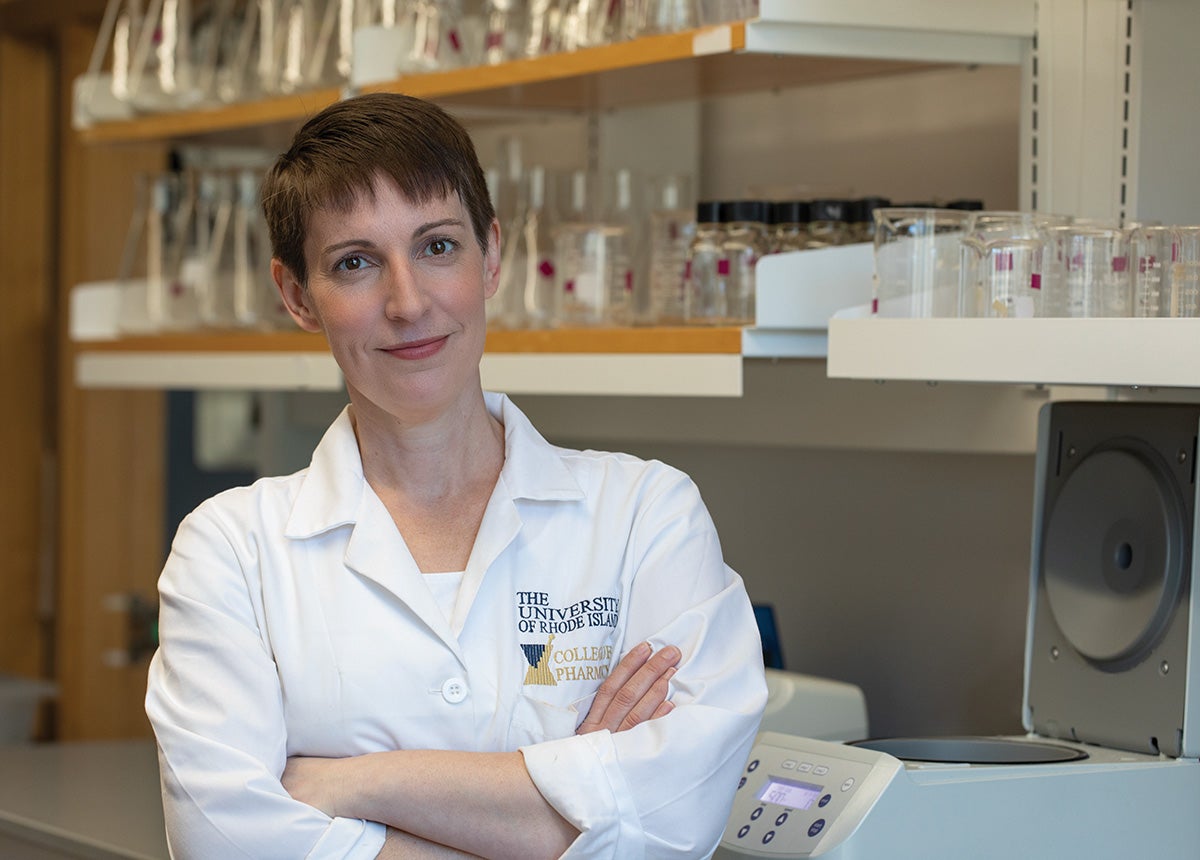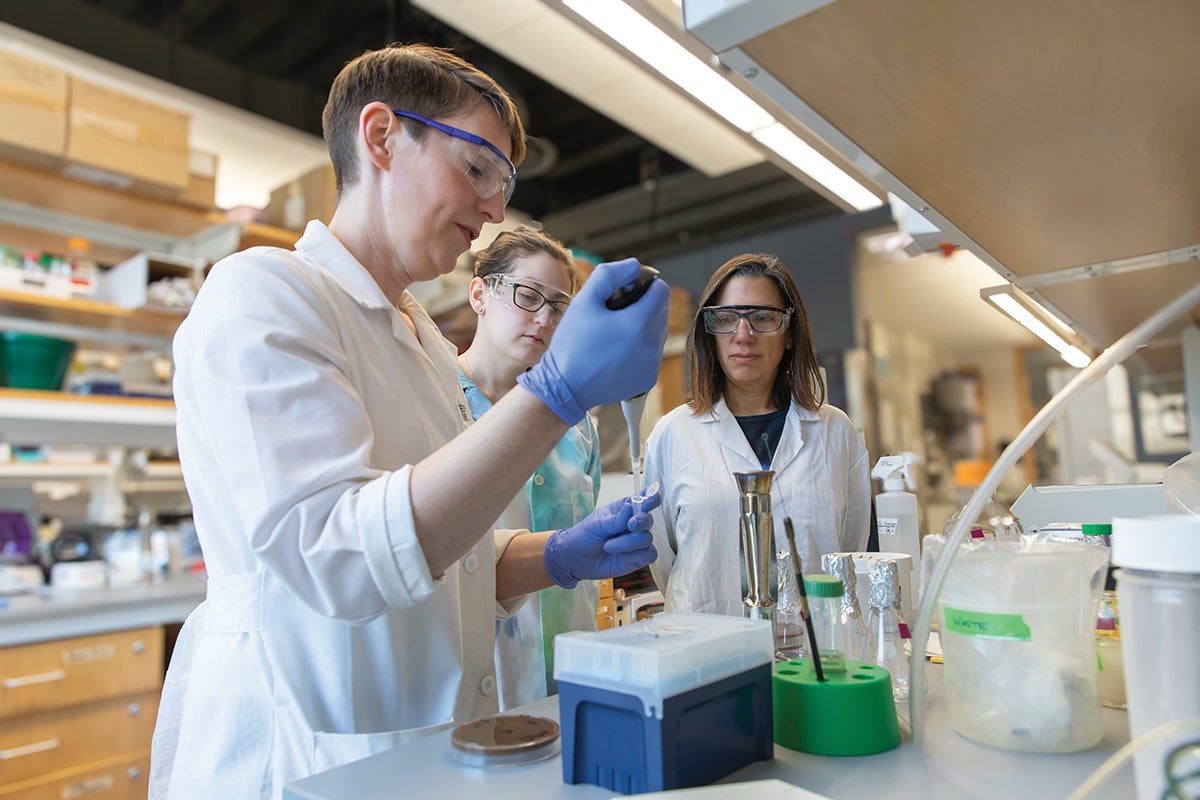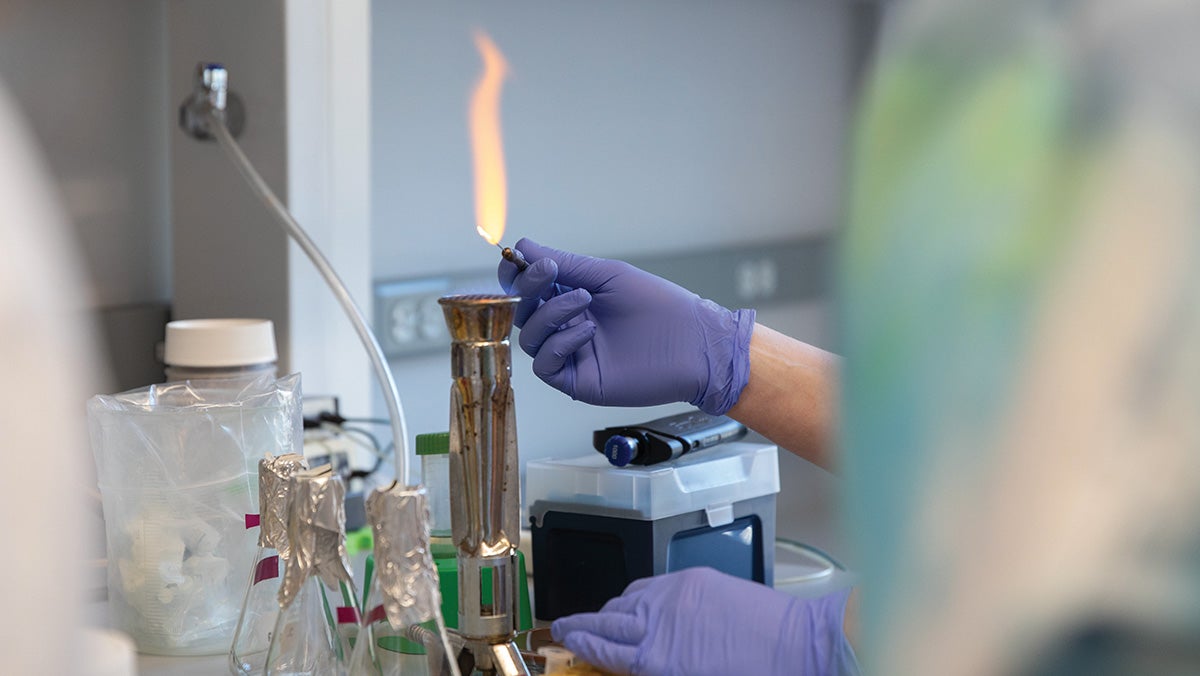Our bodies are covered in bacteria. However, only some of these bacteria cause disease and The University of Rhode Island’s (URI) Kathryn Ramsey is interested in understanding what makes these particular cells work the way they do. By investigating differences among ribosomes, we may be opening the door to drugs that target specific pathogenic bacteria or even specific classes of ribosomes in a particular pathogen.
As an assistant professor of cell and molecular biology, Ramsey studies why pathogenic bacteria cause disease. To do so, she’s looking at the ribosome, the part of the cell that makes proteins. Bacteria are complex. To cause disease, bacteria need to have the genes that make them pathogenic and need to turn those genes on and off at the right time.
“They have to respond to the environment around them,” Ramsey says. “That means that these tiny, tiny cells have to know what’s happening on the outside and be able to adjust their lifestyle accordingly.”

One of the ways cells can adapt is the first step of gene expression–the process of turning DNA into RNA. However, what interests Ramsey is the second step, where RNA gets turned into protein.
All cells feature a multitude of “machines” that make proteins, called the ribosome. Despite its singular name, ribosomes can look and behave differently. Made up of three types of RNA and about 50 proteins, ribosomes have a multitude of ways they can be different, or heterogeneous.
“We know they can be different, and we know some things about how they can become different, but we don’t know what that means for how a ribosome makes proteins,” Ramsey says. “That’s a big question that has really been difficult to answer.”
“The way this connects to disease is that we know that at least one of these ribosomal proteins is important for making virulence proteins, and is
Kathryn Ramsey
important for survival in a host.”
They’re currently studying an organism that causes tularemia, a disease that is rare in humans but can cause a flu-like illness and can be lethal if not detected and treated. Ramsey works with a strain of this organism, Francisella tularensis, that was developed as a vaccine and is attenuated so it can only infect animals, not humans. She likes this organism because it only has one way for ribosomes to be heterogeneous—it has three different versions of a single ribosomal protein, bS21.
Ribosomes typically carry out an essential process called translation, but this particular protein is a bit mysterious: it doesn’t seem to be essential for making proteins. Instead, it might function as a regulatory factor for preferential production of specific proteins. And while many bacteria have one version of bS21, Francisella tularensis cells make three of them.

“The way this connects to disease is that we know at least one of these ribosomal proteins is important for making virulence proteins, and is important for survival in a host,” Ramsey says. “This is a simple way for us to start asking the question ‘How do changes in ribosome composition affect translation’.”
Ramsey hopes that understanding why there are three different versions of bS21 in Francisella tularensis will unlock whether it is a regulator in other bacteria as well.

Ramsey’s lab is currently funded by a National Institutes of Health (NIH) Maximizing Investigators’ Research Award (R35) grant. This is the first R35 grant awarded to URI. Rather than funding a particular project, the $1.9 million, five-year grant funds all of her research that falls within the scope of the funding institute, the National Institute of General Medical Sciences (NIGMS). This means that she can pursue the most interesting and impactful areas of research, even if it expands beyond the original plans in the grant.
In addition to studying ribosomes in Francisella tularensis, Ramsey also plans to examine bS21 in E. coli as it seems to play an important role in the bacteria’s ability to live. This unique ribosomal protein, if missing, also makes the bacteria Staphylococcus aureus more resistant to antibiotics, a phenomenon which the URI assistant professor plans to examine further.

“In E. coli, maybe it’s controlling a certain gene,” she says. “And in staph, these are antibiotics that disrupt the envelope of the bacteria, so why would changing the ribosomes change the cell envelope? The idea is that changing the ribosome composition might change the factors involved in cell wall synthesis, so it’s a regulator of these outcomes.”
The beauty of the NIH grant is that as Ramsey and her lab begin uncovering answers to these questions, they’ll have the funding and freedom to pursue new ones.
“Every time we answer a question, we end up with a new one, which is exciting,” she says.
